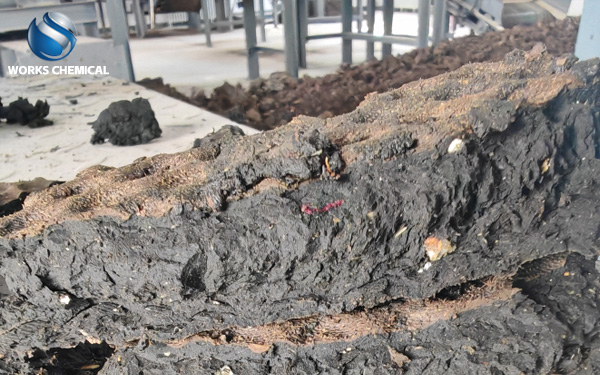
With increasingly strict environmental protection requirements and the rising cost of sludge treatment, how to achieve efficient and economical sludge reduction and resource utilization has become the focus of industry attention. As the core equipment for deep sludge dewatering, the plate and frame filter press has a processing efficiency and operating cost that directly affect the economic efficiency of the entire sludge disposal process. As a new type of chemical conditioner, the sludge enhancer has significantly improved the treatment efficiency of the plate and frame filter press by optimizing the sludge dewatering performance, thus becoming a technological breakthrough point in the field of sludge treatment.

I. The Working Principle of Sludge Enhancer
The core function of sludge enhancers lies in improving the dewatering characteristics of sludge. Its mechanism of action mainly includes the following two aspects:
Physical structure optimization
Microbial cells and colloidal particles in sludge form stable flocs through extracellular polymers (EPS), encapsulating a large amount of bound water. The surface-active components in the sludge enhancer can destroy the EPS structure, release bound water, and at the same time form larger and denser flocs through bridging, reducing the specific resistance of sludge and improving the filtration efficiency.
Chemical charge regulation
The surface of sludge particles usually carries a negative charge, resulting in an enhanced repulsive force between flocs. The cationic polymer in the sludge enhancer can neutralize the charge, reduce the ζ potential, promote the flocculation of sludge particles, form a network structure that is easy to dewater, and shorten the filtration cycle.
Second, the efficiency improvement of plate and frame filter presses by sludge enhancers
The dehydration efficiency has been significantly improved
Reduction in moisture content: Experimental data shows that after using sludge enhancers, the moisture content of municipal sludge can be reduced from 80% to 85% to below 60%, and that of industrial sludge (such as petrochemical and papermaking sludge) can be reduced to 50% to 55%.
The filtration cycle is shortened: the sludge dewatering speed is increased by 30% to 50%, the processing time per batch is reduced, and the equipment production capacity is enhanced by 20% to 40%.
2. Operating cost optimization
Energy consumption reduction: The improvement in dewatering efficiency directly reduces the operating time of the filter press. Combined with the reduction in sludge volume, the overall energy consumption drops by 15% to 25%.
The cost of the agent is controllable: The dosage of the sludge enhancer is usually 0.5%-2% of the dry basis of the sludge, which is much lower than the traditional lime + iron salt conditioning scheme, and there is no need to add additional lime, avoiding equipment corrosion and sludge volume increase.
3. Outstanding environmental benefits
Sludge reduction: A decrease in moisture content reduces the volume of sludge by 50% to 70%, significantly lowering transportation and disposal costs.
Enhanced resource utilization potential: Sludge with a low moisture content is more likely to meet the resource utilization requirements such as incineration and building materials utilization, reducing the reliance on landfill.
Iii. Application Scenarios of Sludge Enhancers
Municipal sewage treatment plant
For the excess activated sludge, the sludge enhancer can replace the traditional "lime +PAM" process, solve the problems of equipment scaling and sludge capacity increase, and help reduce the sludge disposal cost by more than 30%.
The field of industrial wastewater treatment
In the petrochemical industry, when dealing with oily sludge, enhancers can break emulsions and remove oil, thereby enhancing the filtration effect.
In the papermaking industry, for high-fiber sludge, enhancers can improve the structure of flocs and reduce filter cloth clogging.
Emergency response scenario
When there is a sudden surge in sludge production or equipment failure, the enhancer can quickly increase the processing capacity of the filter press and ensure the stable operation of the system.
Iv. Case Analysis: A Municipal Sludge Treatment Project
Project Background: A sewage treatment plant with a daily processing capacity of 200,000 tons has a sludge output of 120 tons per day (with a moisture content of 80%). Originally, a plate and frame filter press and lime conditioning were used, but the sludge volume was increased to 1.8 times, resulting in high disposal costs.
Renovation plan:
Stop using lime and switch to sludge enhancers
Optimize the process parameters of the filter press (pressure 1.2 MPa, pressure holding time shortened to 40 minutes).
Conclusion
The sludge efficiency enhancer has broken through the performance bottleneck of the plate and frame filter press through the synergistic effect of chemistry and physics, and has demonstrated significant advantages in improving efficiency, reducing costs, and meeting environmental protection standards. Its wide application is not only a manifestation of technological progress, but also a key support for the green transformation of the sludge treatment industry.